Pharaoh Psusennes I Buried In The Silver Coffin Inlaid With Gold
A. Sutherland - AncientPages.com - Tanis (dubbed "Luxor of the North"), an ancient area in the Nile Delta, Egypt, was an early subject of the archaeologists' interest. The city's name was already well known as Soan (biblical Zoan).
Among many tombs of Tanis, there was one that belonged to Psusennes I, the third pharaoh of the 21st Dynasty who ruled from Tanis between 1047 – 1001 BC.
His name Psusennes (in Greek, Pasibkhanu ) or Egyptian Hor-Pasebakhaenniut means "The Star Appearing in the City" and his throne name was translated to ”Great are the Manifestations of Ra, chosen of Amun." Psusennes I was the third king of the Twenty-first Dynasty and is probably the best known of all this dynasty's kings.
In February 1939, the French archaeologist Pierre Montet (1885 – 1966) and his workers discovered an underground chamber blocked by a stone.
It was a tomb consisting of four decorated limestone chambers containing sarcophagi belonging Osorkon III and Prince Hornakht and the remnants of Takelot II’s and Osorkon I’s tombs.
In 1940, Montet and his workers continued the excavations at the ancient capital of Tanis and discovered one complete, undisturbed tomb.
The tomb belonged to the 21st Dynasty king Psusennes I, as well as the tombs of the Pharaohs Osorkon I, Takelot II, Sheshonq III, and others in a royal necropolis at Tanis.
The chamber was opened by moving the door block of granite.
In a narrow room, there was enough space for a decorated coffin made of rose granite.
At the feet of the sarcophagus stood a canopic jar, which contained the king's internal organs and vessels in gold and silver. The king's body was covered with amulets, precious and semi-precious stones.
Psusennes' mummy - destroyed due to Lower Egypt's moist location - was placed inside a coffin of silver, which was more valuable than gold as it had to be imported to Egypt.
This coffin was then placed in a black granite sarcophagus, which was in turn placed in a red granite outer sarcophagus.
Especially notable amongst the items discovered in the tomb was Psusennes' solid gold mask, which was found completely intact.
The mask – considered one of the treasure masterpieces - was made of gold and lapis lazuli and held inlays of black and white glass for the eyes and eyebrows of the object. It has a maximum width and height of 38 cm and 48 cm respectively.
Archaeologists discovered that the pharaoh's "fingers and toes had been encased in gold stalls, and he was buried with gold sandals on his feet. The finger stalls are the most elaborate ever found, with sculpted fingernails. Each finger wore an elaborate ring of gold and lapis lazuli or some other semiprecious stone.
The intact tomb of pharaoh Psusennes I can only be compared to Tutankhamun's and it testifies that Psusennes I had a rich funeral.
Written by – A. Sutherland AncientPages.com Staff Writer
Copyright © AncientPages.com All rights reserved. This material may not be published, broadcast, rewritten or redistributed in whole or part without the express written permission of AncientPages.com
Expand for referencesReferences:
More From Ancient Pages
-
 Why Did King Solomon Hide Advanced Technology In A Secret Place? – The Great Deception – Part 2
Featured Stories | Apr 3, 2021
Why Did King Solomon Hide Advanced Technology In A Secret Place? – The Great Deception – Part 2
Featured Stories | Apr 3, 2021 -
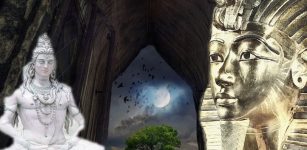 Axis Mundi That Symbolizes Separation Of The Earth From The Heaven
Featured Stories | Jul 2, 2018
Axis Mundi That Symbolizes Separation Of The Earth From The Heaven
Featured Stories | Jul 2, 2018 -
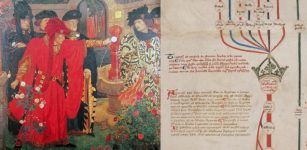 Unique Canterbury Roll – Ancient Manuscript Reveals Its Secrets About History Of England
Archaeology | Jan 5, 2018
Unique Canterbury Roll – Ancient Manuscript Reveals Its Secrets About History Of England
Archaeology | Jan 5, 2018 -
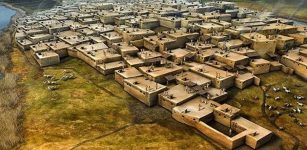 Mysterious Ancient Site Of Çatalhöyük: Remains Of Early Structures May Shed More Light On Its Obscure Past
Archaeology | Apr 11, 2017
Mysterious Ancient Site Of Çatalhöyük: Remains Of Early Structures May Shed More Light On Its Obscure Past
Archaeology | Apr 11, 2017 -
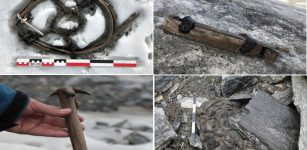 Rare Viking Artifacts Hidden Beneath The Ice Discovered By Archaeologists In Norway
Archaeology | Feb 6, 2021
Rare Viking Artifacts Hidden Beneath The Ice Discovered By Archaeologists In Norway
Archaeology | Feb 6, 2021 -
 Utiseta – Norse Vision Quest – Ancient Spiritual Tradition Of Northern Europe
Ancient Traditions And Customs | Oct 3, 2019
Utiseta – Norse Vision Quest – Ancient Spiritual Tradition Of Northern Europe
Ancient Traditions And Customs | Oct 3, 2019 -
 Norse Goddess Sif Who Lost Her Golden Hair Due To Loki’s Evil Deed
Featured Stories | Jun 30, 2018
Norse Goddess Sif Who Lost Her Golden Hair Due To Loki’s Evil Deed
Featured Stories | Jun 30, 2018 -
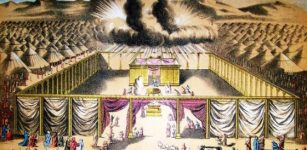 Intriguing Discovery Could Offer Proof Of The Tabernacle – Has The Dwelling Place Of God Been Located?
Archaeology | Nov 9, 2013
Intriguing Discovery Could Offer Proof Of The Tabernacle – Has The Dwelling Place Of God Been Located?
Archaeology | Nov 9, 2013 -
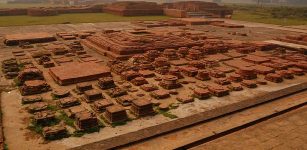 Vikramashila: India’s Main Intellectual And Learning Center Of Tantric Buddhism
News | Sep 19, 2015
Vikramashila: India’s Main Intellectual And Learning Center Of Tantric Buddhism
News | Sep 19, 2015 -
 Medieval Mythbusting – New Research Rewrites History Of Glastonbury Abbey
Archaeology | Nov 23, 2015
Medieval Mythbusting – New Research Rewrites History Of Glastonbury Abbey
Archaeology | Nov 23, 2015 -
 Mayan Maize God And Ancient City Of El Mirador
Featured Stories | Apr 25, 2019
Mayan Maize God And Ancient City Of El Mirador
Featured Stories | Apr 25, 2019 -
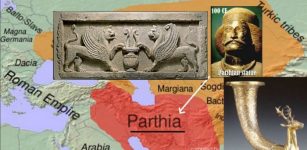 Next Discovery In Tepe Ashraf, Isfahan – Archaeologists May Have Stumbled Upon Ancient Necropolis
Archaeology | Aug 16, 2020
Next Discovery In Tepe Ashraf, Isfahan – Archaeologists May Have Stumbled Upon Ancient Necropolis
Archaeology | Aug 16, 2020 -
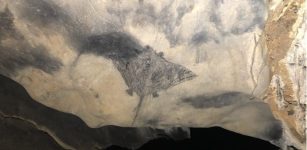 New Dating Of Intriguing Cave Art Reveals History Of Puerto Rican People
Archaeology | Oct 19, 2023
New Dating Of Intriguing Cave Art Reveals History Of Puerto Rican People
Archaeology | Oct 19, 2023 -
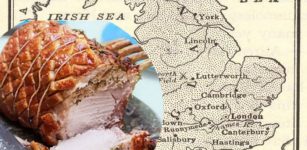 How Did Norman Conquest Of 1066 Affect Everyday People’s Eating Habits?
Archaeology | Jul 7, 2020
How Did Norman Conquest Of 1066 Affect Everyday People’s Eating Habits?
Archaeology | Jul 7, 2020 -
 Living Descendant Of Legendary Native American Leader Sitting Bull Confirmed Using DNA From Hair
Archaeology | Oct 27, 2021
Living Descendant Of Legendary Native American Leader Sitting Bull Confirmed Using DNA From Hair
Archaeology | Oct 27, 2021 -
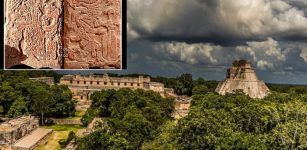 Ancient Maya Stela Carved On Both Sides Unearthed ‘In Situ’ In Uxmal, Yucatan Peninsula
Archaeology | Oct 31, 2022
Ancient Maya Stela Carved On Both Sides Unearthed ‘In Situ’ In Uxmal, Yucatan Peninsula
Archaeology | Oct 31, 2022 -
 Holmgang – Dangerous Viking Duel Settled Disputes
Ancient History Facts | Mar 10, 2018
Holmgang – Dangerous Viking Duel Settled Disputes
Ancient History Facts | Mar 10, 2018 -
 ‘Impossible’ Ancient Traces Of Humans – No, We Are Not The First
Artifacts | May 16, 2020
‘Impossible’ Ancient Traces Of Humans – No, We Are Not The First
Artifacts | May 16, 2020 -
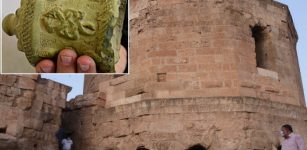 The Main Gate Of Historical 9th-Century Old Harran Palace Unearthed
Archaeology | Oct 25, 2020
The Main Gate Of Historical 9th-Century Old Harran Palace Unearthed
Archaeology | Oct 25, 2020 -
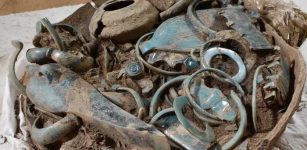 Hundreds Of Exceptional Bronze Age Artifacts Discovered In France Were Probably Offerings
Archaeology | Aug 28, 2021
Hundreds Of Exceptional Bronze Age Artifacts Discovered In France Were Probably Offerings
Archaeology | Aug 28, 2021



